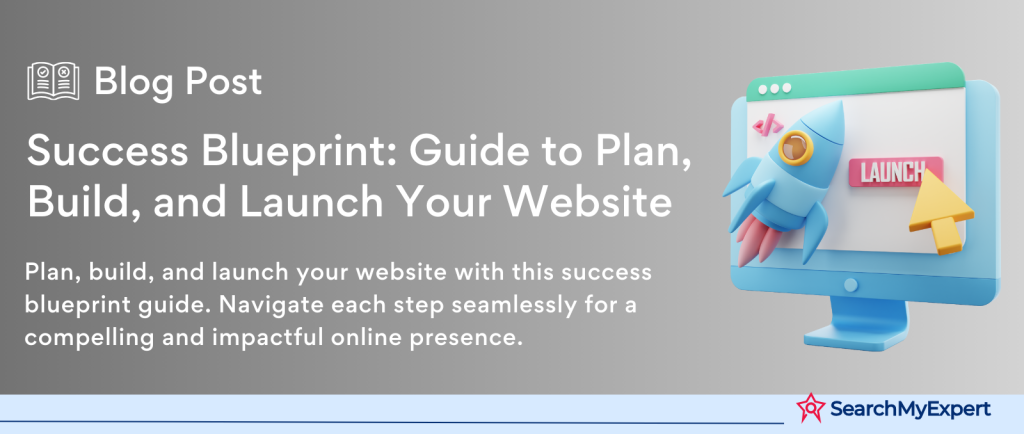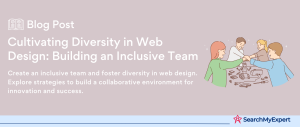Web Design Project Management: Goals and Scope
Introduction
When embarking on a website development project, defining its goals and scope is crucial. This initial step sets the foundation for the project’s direction, ensuring alignment with client needs and expectations. This section covers key aspects of this process.
Identifying Client Needs and Objectives
Understanding client needs and objectives is pivotal. It’s essential to engage in detailed discussions to grasp their vision, goals, and specific requirements for the website.
Conduct Interviews and Surveys
Gather insights through interviews and surveys with stakeholders. This step ensures that the client’s voice is heard, and their expectations are clearly understood.
Analyze the Market and Competitors
A thorough analysis of the market and competitors provides valuable insights into industry standards and innovative features.
Define Specific Objectives
With collected data, define specific, achievable objectives for the website. These might include increasing brand awareness, generating leads, or improving user engagement.
Establishing Target Audience and User Personas
Identifying the target audience is vital for website success. Knowing who will use the website guides design and functionality choices.
Research Target Audience
Conduct demographic and psychographic research to understand the audience’s needs, preferences, and behavior patterns.
Develop User Personas
Create detailed user personas representing the website’s primary users. This step helps in visualizing and understanding the end-users’ needs and expectations.
Defining Key Functionalities and Features
The website’s features and functionalities should align with the defined objectives and user needs.
List Essential Features
List essential features like navigation, content management, interactivity, and responsiveness based on the project’s goals and user personas.
Consider Innovative Additions
Explore innovative features that could give the website a competitive edge, such as AI chatbots, personalized user experiences, or advanced search filters.
Setting Clear and Measurable Success Metrics
Defining success metrics is crucial for measuring the website’s performance against its objectives.
Identify Key Performance Indicators (KPIs)
Identify KPIs such as website traffic, user engagement, conversion rates, and bounce rates.
Establish Measurement Tools
Decide on tools and methods for tracking and analyzing these metrics, like Google Analytics or custom dashboards.
Assemble the Project Team and Define Roles
Building the Team
The success of a website development project largely depends on the skills and expertise of the team.
Identify Required Skills
Identify the skills needed for the project, such as web design, development, content creation, and project management.
Recruit Team Members
Recruit individuals or agencies with the necessary expertise. Consider using platforms like
Search My Expert to find the right agencies.
Assigning Roles and Responsibilities
Each team member should have a clear understanding of their roles and responsibilities.
Define Clear Roles
Assign roles like project manager, web developer, UI/UX designer, content strategist, and QA tester.
Set Responsibilities
Define each role’s responsibilities to ensure accountability and efficient workflow.
Establishing Communication and Collaboration
Effective communication and collaboration are key to a project’s success.
Choose Communication Tools
Select tools like Slack, Microsoft Teams, or Asana for team communication and project tracking.
Define Collaboration Strategies
Establish regular meetings, reporting systems, and collaboration methods to ensure smooth teamwork and project progress.
Develop a Detailed Project Plan and Timeline
Introduction
Creating a detailed project plan and timeline is a critical step in website development. This process ensures that all tasks are efficiently organized, resources are effectively allocated, and potential risks are managed. Let’s delve into each aspect of this process.
Breaking Down the Project into Tasks and Milestones
The complexity of website development necessitates breaking down the project into smaller, manageable tasks and significant milestones.
List All Tasks
Start by listing every task required for the project, including design, development, content creation, testing, and deployment.
Define Milestones
Milestones mark significant phases in the project, like completing the design phase, launching the beta version, or going live. These provide clear goals and help monitor progress.
Estimating Time and Resource Requirements
Accurate estimation of time and resources is crucial for project planning.
Evaluate Task Complexity
Assess the complexity of each task. Complex tasks like custom coding or intricate design work will require more time and specialized skills.
Allocate Resources
Based on the task complexity, allocate resources, including team members, tools, and budget.
Time Estimation
Estimate the time required for each task. Consider past project experiences and consult with team members for more accurate estimations.
Creating a Gantt Chart or Timeline
A visual representation of the timeline, like a Gantt chart, is essential for effective project management.
Use Project Management Tools
Utilize tools like Microsoft Project or online platforms like Asana or Trello to create a Gantt chart.
Represent Tasks Visually
Plot each task and milestone on the timeline. This visual representation helps in understanding task dependencies and project flow.
Update Regularly
Keep the Gantt chart updated to reflect any changes in the project plan or timeline.
Identifying Potential Risks and Mitigation Strategies
Risk management is a critical component of project planning.
Conduct Risk Assessment
Identify potential risks, such as technical challenges, resource limitations, or delays in deliverables.
Develop Mitigation Strategies
For each identified risk, develop a mitigation strategy. This could include contingency plans, additional resource allocation, or alternative approaches.
Regularly Review and Update
Regularly review the risk management plan and update it as the project progresses and new risks emerge.
Design and Development
Introduction
Design and development are the heart of the website creation process. This stage transforms ideas into tangible, functional digital products. It involves user research, information architecture, wireframing, prototyping, and the technical aspects of website construction.
Conducting User Research and Information Architecture Planning
User research and information architecture are foundational for a user-centric design.
User Research
- Understand User Needs: Conduct surveys, interviews, and usability studies to gather insights about user preferences and behaviors.
- Analyze Data: Utilize the data to understand what users expect from the website, focusing on ease of use, aesthetics, and functionality.
Information Architecture
- Structure Content: Organize content in a logical, easy-to-navigate manner. Tools like card sorting can be instrumental here.
- Create Sitemaps: Develop sitemaps to outline the website’s structure, ensuring a smooth user journey.
Designing Wireframes and Prototypes
Wireframes and prototypes are crucial for visualizing and testing the website’s design.
Wireframes
- Sketch Layouts:
Create basic sketches of web pages to layout elements like headers, footers, and content areas. - Refine with Feedback: Use team and client feedback to refine the wireframes.
Prototypes
- Develop Interactive Models: Create interactive prototypes to simulate the user experience.
- User Testing: Conduct user testing sessions to gather feedback and make necessary adjustments.
Developing the Website Front-End and Back-End Infrastructure
The technical development involves both front-end and back-end work.
Front-End Development
- Build User Interface: Use HTML, CSS, and JavaScript to build an engaging and responsive user interface.
- Ensure Cross-Platform Compatibility: Test and tweak the website to ensure it works seamlessly across different browsers and devices.
Back-End Development
- Set Up Server, Database, and Application Logic: Implement server-side languages like PHP, Ruby, or Python and database systems like MySQL or MongoDB.
- Ensure Security and Performance: Prioritize security measures and optimize for speed and performance.
Implementing Content Management System (CMS) and Integrating Functionalities
A CMS and integrated functionalities are essential for a dynamic, manageable website.
CMS Implementation
- Choose a Suitable CMS:
Select a CMS like WordPress, Joomla, or a custom solution based on the project’s needs. - Customize and Set Up:
Tailor the CMS to fit the website’s design and functionality requirements.
Integrating Functionalities
- Add Essential Features:
Incorporate features like search functions, contact forms, e-commerce capabilities, or social media integration. - Testing and Debugging: Rigorously test all functionalities and fix any bugs to ensure smooth operation.
Testing and Quality Assurance
Introduction
Testing and quality assurance (QA) are critical in the website development process, ensuring that the final product is functional, user-friendly, and free of technical issues. This phase involves meticulous testing across multiple platforms and resolving any discovered problems.
Conducting Thorough Testing Across Various Devices and Browsers
In the digital age, where users access websites from a myriad of devices and browsers, compatibility testing is essential.
Cross-Device Testing
- Test on Multiple Devices:
Ensure the website functions correctly on various devices, including smartphones, tablets, and desktops. - Responsive Design Check: Verify that the design is responsive and provides a seamless experience on different screen sizes.
Cross-Browser Testing
- Test Across Browsers:
Check the website’s performance on multiple browsers like Chrome, Firefox, Safari, and Edge. - Ensure Consistency:
The layout, features, and performance should be consistent across all browsers.
Addressing Bugs and Fixing Technical Issues
Identifying and resolving bugs is a crucial step in QA.
Bug Identification
- Use Bug Tracking Tools:
Employ tools like JIRA or Bugzilla to track and manage bugs efficiently. - Prioritize Bugs: Classify bugs based on severity and impact, focusing first on those that critically affect functionality.
Technical Fixes
- Resolve Issues:
Developers should address and fix the issues identified during testing. - Regression Testing:
After fixes, conduct regression testing to ensure that new changes haven’t introduced additional problems.
Ensuring Website Functionality, Performance, and Accessibility
A comprehensive QA process goes beyond just fixing bugs.
Functionality Testing
- Test All Features:
Ensure every feature, from navigation to contact forms, works as intended. - User Journey Testing: Test complete user journeys to ensure a smooth experience from start to finish.
Performance Testing
- Load Time: Check the website’s load times to ensure they meet industry standards.
- Stress Testing:
Test how the site handles high traffic and data processing to ensure stability under pressure.
Accessibility Testing
- Compliance with Standards: Ensure the website is accessible according to standards like WCAG.
- Universal Design:
Test for usability across a diverse range of users, including those with disabilities.
Launch and Ongoing Maintenance
Introduction
The launch of a website is not the end but a new beginning. This phase encompasses implementing a launch strategy, monitoring performance, providing ongoing maintenance, and iterating based on user feedback and data.
Implementing a Launch Strategy
A well-planned launch strategy is crucial to capture the attention of the target audience.
Marketing and Promotion
- Utilize Digital Marketing: Leverage SEO, social media marketing, and email campaigns to promote the website.
- Press Releases and Partnerships: Consider press releases and partnerships with influencers or other websites to widen reach.
Engaging the Target Audience
- Announcements:
Make announcements on various platforms to create buzz. - Special Offers: Introduce launch offers or exclusive content to attract initial users.
Monitoring Website Performance and User Behavior
Post-launch, it’s vital to keep an eye on how the website performs and how users interact with it.
Performance Metrics
- Track Key Metrics: Use tools like Google Analytics to monitor traffic, bounce rates, user engagement, and conversion rates.
- Regular Reporting:
Set up regular reporting mechanisms to keep stakeholders informed about the website’s performance.
User Behavior Analysis
- User Feedback Tools: Implement tools to gather direct user feedback, such as surveys or feedback forms.
- Behavioral Analysis:
Analyze user behavior through heatmaps and session recordings to understand how users interact with the site.
Providing Ongoing Maintenance and Support
Continuous maintenance ensures the website remains functional and up-to-date.
Technical Updates
- Regular Updates: Keep all software, like CMS and plugins, updated to the latest versions.
- Security Checks: Perform regular security checks to protect against vulnerabilities.
Support System
- Customer Support: Establish a robust customer support system to address user issues and queries.
- Troubleshooting:
Have a team ready for immediate troubleshooting in case of any technical glitches.
Gathering Feedback and Iterating Based on Data
Iterative improvements based on data and feedback are key to the website’s long-term success.
Collecting Feedback
- User Reviews and Surveys:
Encourage users to leave reviews and conduct periodic surveys to gather opinions. - Community Engagement:
Engage with users on social media or forums to understand their needs and experiences.
Data-Driven Iteration
- Analyze Data:
Regularly review collected data to identify trends and areas for improvement. - Implement Changes:
Make informed changes and additions to the website based on this analysis.
Conclusion
In the realm of website development, success hinges on a structured approach, encompassing well-defined steps from initial planning to final evaluation. Each phase, from defining project goals to launching the website and beyond, plays a pivotal role in turning a conceptual vision into a digital reality.
This journey, layered with complexities and challenges, demands not just technical skills but also strategic thinking, team collaboration, and a relentless focus on the end-user experience. Each step is an opportunity to innovate, learn, and excel, contributing to the overarching goal of creating websites that not only meet but exceed user expectations and client requirements.
As technology evolves and user expectations shift, the field of website development continues to offer new challenges and opportunities. Staying abreast of these changes, learning from each project, and continuously refining processes are key to thriving in this dynamic landscape.
For businesses and developers alike, understanding and mastering these steps is the pathway to delivering successful, impactful web projects. Whether you are at the helm of a complex e-commerce website or crafting a simple yet engaging portfolio site, the principles of structured development, thorough testing, and continuous improvement remain universally applicable.
Discover the power of creative web solutions with our Web Design Services.
Table of Contents
Toggle






